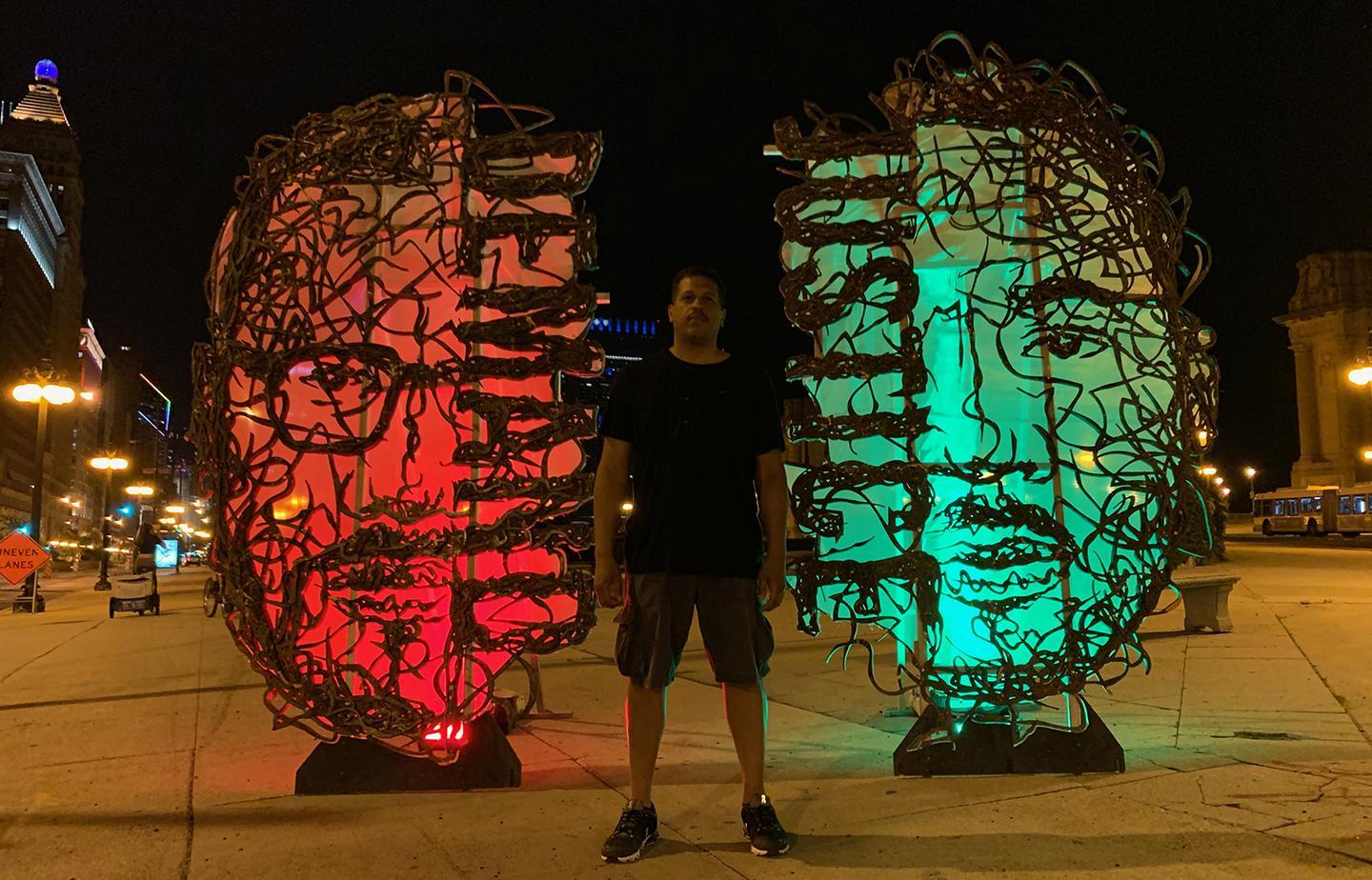Part I: The Construction of Racism
After the video of the murder of George Floyd started to dominate the news cycle, it took several days for me to force myself to watch it. All nine-minutes of it. The anguish that swelled within me was so overpowering that it felt as if it was going to burn away pieces of my soul. A couple of days later I found myself in jail after being arrested while participating in a protest demonstration near Trump Tower. Yet I know that such demonstrations alone will not defeat American racism. As I read statement after statement from public officials, I felt I needed to offer school leaders--and the public in general--more than a statement about racism. I needed to offer solutions and answers to essential questions.
- What is racism?
- Why are people racist?
- Is hatred at the root of racism?
- How do we create meaningful and productive conversations about race and racism?
- Can the problem of personal and institutional racism be solved? If so, how?
Each one of these questions has a clear and definite answer but those answers are not widely known or discussed because they have not been priorities in our society or its institutions. In an effort to start filling that gap, I’ve composed a three-part primer for those of us who are searching for answers and looking for some direction on how to fight American racism, and win.
Enduring Understandings
There are three things about racism that we must take into account if we are going to plan any effective action against it.
Racism is not natural. It was cultivated to divide and exploit working people. It was deliberately created and can be deliberately destroyed.
Many individual acts of racism are grounded in racist ideas and subconscious biases that take root in the minds of American people.
Racism’s destructive force is magnified when it is ritualized in the everyday practices and policies of American institutions.
With that understanding, racism can be fought successfully by (1) developing ourselves into anti-racists who recognize and confront our own racial biases, (2) transforming racist institutions into anti-racist institutions, and (3) uniting working people on scales both large and small to confront and overcome the obstacles to our mutual prosperity--the very thing that racism was concocted to prevent.
In this three-part series, Mastering American Racism, I will clarify these ideas and use them to offer a roadmap for confronting and defeating racism and those who peddle it.
Part 1: The Creation of Racism
The Origins of Racial Bias
Before the mid-1600s, wealthy European colonists forced poor Europeans and Africans to work alongside one another in the same miserable conditions. These laborers did not see themselves as a part of any color-based race. They worked together, played together, intermarried, and ran away together to escape their common oppression. They also rebelled together. As a result, color-based race was an idea created and promoted by wealthy colonists to pit European laborers against African laborers to make them less likely to unite against their common adversary: the wealthy who exploited and looted them both. This was accompanied by the intensified subjugation and enslavement of African laborers which, in turn, led to the need to produce more racist ideas to justify enslaving them. These ideas were designed--in part--to convince those white laborers that there was something different about Black people, and those differences were always nefarious and inferior. From that moment, until today, powerful individuals and institutions in this country have used their control of various forms of education, entertainment, and media to condition the population to think of Black people as violent, immoral, undisciplined, ignorant, and criminal to justify their subjugation and inhuman treatment. American elites made it a national pastime for whites to impugn the integrity of “black” character, question the truth of “black” voices, malign the intentions of “black” hearts, and trivialize the worth of “black” lives.
White Oblivion
During his speech at the end of the Selma/Montgomery march, Martin Luther King reminded us that after slavery, poor people--both black and white--were being exploited by the ruling class. He asked us to remember that during the Reconstruction Era the Populist Movement attempted to unite the poor white and black masses into a voting block that could drive the wealthy from power. Then Dr. King explained what the wealthy class did to divide and conquer Black and white working-class people.
"To meet this threat, they engineered a segregated society. I want you to follow me through here because this is very important to see the roots of racism. They revised the doctrine of white supremacy and through their control of mass media, they saturated the thinking of the poor white masses with it, thus clouding their minds to the real issues. They made it a crime for Negroes and whites to come together as equals at any level. And that did it. That crippled and eventually destroyed the Populist Movement of the nineteenth century.
"If it may be said of the slavery era that the white man took the world and gave the Negro Jesus, then it may be said of the Reconstruction era that the southern aristocracy took the world and gave the poor white man Jim Crow. And when [the poor white man’s] wrinkled stomach cried out for the food that his empty pockets could not provide, he ate Jim Crow, a psychological bird that told him that no matter how bad off he was, at least he was a white man, better than the black man. And when his undernourished children cried out for the necessities that his low wages could not provide, he showed them the Jim Crow signs … and his children, too, learned to feed upon Jim Crow, their last outpost of psychological oblivion."
It is no small stretch to say that today, many white people helped put our current President in the White House based, in no small part, on their continued immersion in that same psychological oblivion.
Segregation’s Role in Maintaining Racial Bias
A major function of segregation is that it reduces the likelihood that white people would have enough experiences with Black people to contradict the false narratives they’d been conditioned to believe about them. It’s hard to think Black people are violent, undisciplined, and stupid if you keep meeting scores of peaceful, disciplined, and intelligent Black people. Therefore segregation reinforces and maintains the racial conditioning of the white mind. In other words, segregation creates a physical oblivion to buttress and maintain the psychological one.
It must also be said that Black people hold many of these same negative ideas about other Black people because we grow and develop exposed to the same false noxious images and narratives about people who look like us. To some degree however American segregation dampens the bias that we hold toward one another. The fact that Black people live in the same communities means that we are more likely than whites to have repeated encounters with the truth about other Black people and therefore reject biased messages that American culture bombards us with. To be clear, this dampens the bias but it does not eliminate it.
Summary of Part I and Preview of Parts II and III
Racism is not natural. Racist ideas were concocted to justify the absolute exploitation of African people and pit European workers against them, which facilitated the exploitation of both groups, one far more brutal than the other. The concoction and consumption of racist ideas to justify inequities in the treatment and condition of targeted groups of people and pit them against one another have continued and evolved uninterrupted for nearly 400 years. Black people have been the primary targets of such ideas, but far from the only targets.
Part II, “Racism Defined / How Racism Works,” will be released tomorrow (Thursday) at noon. It will explain three types of racism and take a deep dive into the third type, conditioned racism. It will clearly demonstrate how good well-meaning people--including you and me--can behave in racist ways without knowing it or intending to do so. It will give examples of the impact of such behavior, and how to recognize the biases at the root of it.
Part III, “Dismantling Racism: How We Move Forward,” will be released Friday at 8:00 AM. It will illuminate institutional racism and suggest actions that can be taken to end both individual and institutional racism. It focuses on the root of racism--the division and exploitation of working people--by offering strategies and tactics for us to come together not just to fight racism, but to reach the goal that racism itself was designed to prevent: ensuring that working people get a fair share of the public and private wealth that we produce.

